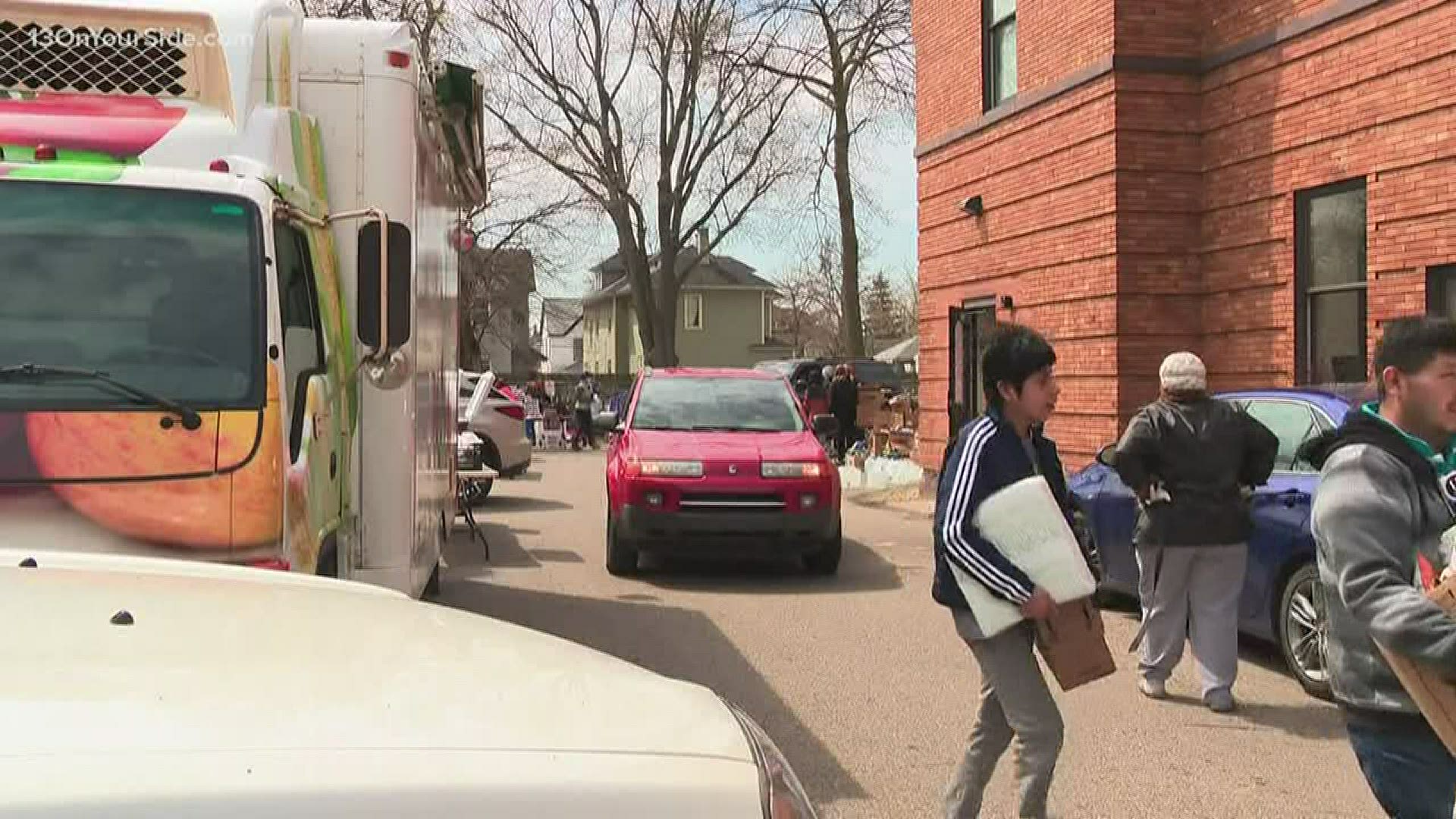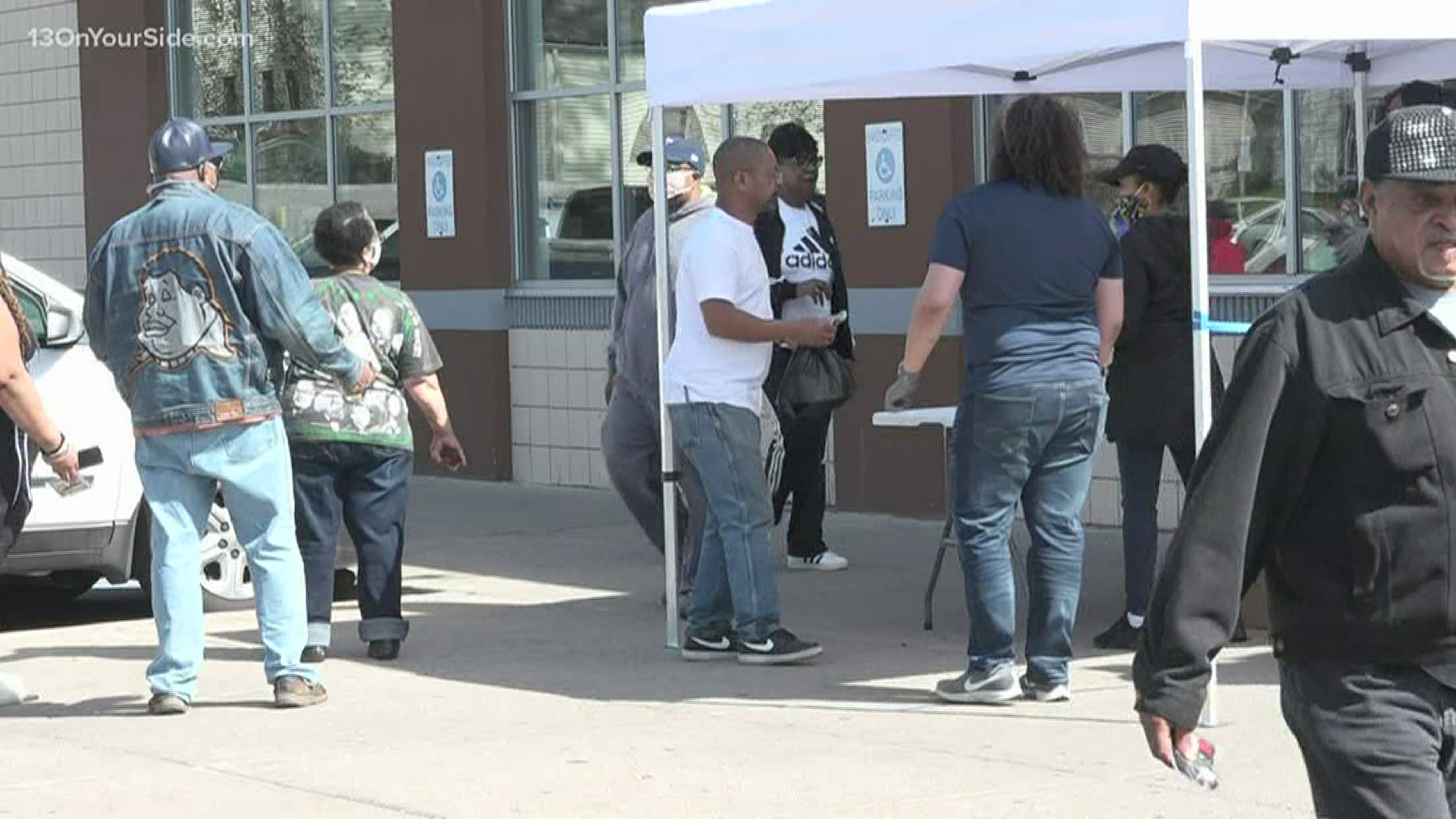KENT COUNTY, Mich. — As more data becomes available, it's become more clear the racial disparities present in the impact of COVID-19.
Latinos make up about 10% of Kent County's population, but account for nearly 35% of the county's coronavirus cases.
"That is probably one of the biggest things that we're seeing different here in Kent County," said Brian Hartl an epidemiologist with Kent County Health Department.
State data shows that Black people have been disproportionately impacted by the virus, accounting for more than 32% of cases and 41% of deaths while making up only 14% of the population. But, people of Hispanic and Latino ethnicity make up about 5% of the state's cases and 2% of deaths, while accounting for about 5% of Michigan's population.
A majority of Kent County's 2,076 cases are concentrated in the urban areas, like Grand Rapids and Wyoming where the Latino population is larger. However, Hartl says the reason for this disproportion is likely due to long-standing societal issues apparent in things like housing and transportation.
"I think a lot of those inequities and disparities that we see in our community based upon socioeconomics is really playing a part in the transmission of COVID-19," Hartl said.
Adnoris Torres, executive director of the Hispanic Center of Western Michigan, agrees.
"It has been exacerbated by a lot of the historical issues that we have faced," Torres said.
Hartl said the health department is seeing that transmission is happening within multi-person households, work environments where social distancing is not happening or personal protective equipment has not been provided and through use of public transportation. The health department's data also shows that the positive cases in the Latino community trend to a younger population.
Latino community members in their 30s account for the highest number of cases, according to health department data.
Torres says a lack of access to information and resources early on may also be contributing to a high case count now.
"I think that looking at and keeping top of mind communities that have been historically outside of systems whenever something occurs should be as important as all other aspects," Torres said. "So, when we start to have a conversation around a crisis, we look at it holistically and say how can we engage populations that we know at some point have been marginalized and that could face a higher threat?"
Hartl says the health department is seeing members of the Latino community end up hospitalized for the virus.
"We are definitely seeing some severe cases in that population," he said.
Torres said testing and contact tracing will be crucial in curbing further spread. Hartl says the county is prioritizing testing in disproportionately impacted populations like the Latino, African American and Asian American communities.
In addition, a number of community partners are ramping up efforts to disseminate both information and resources like masks, food and financial assistance.
LatinxGR, which is made up of five different groups, organized a volunteer-based translation system not only for monolingual Spanish speaking families, but for all populations. KCHD is providing its daily update videos in Spanish.
The Grand Rapids Area Mutual Aid Network has formed in response to the pandemic and is made up of residents who are providing groceries and financial support to primarily people of color in the Greater Grand Rapids Area with the help of donations. The Heart of West Michigan United Way, an area nonprofit, has also set up a coronavirus response fund to aid vulnerable populations. La Lucha Fund, which is also accepting donations, provides assistance to immigrant families, who do not qualify for federal assistance.
Torres said he hopes the conversations and actions taken in response to the pandemic lead to lasting change within marginalized communities.
"We need to make sure that there are real system solutions for those that are outside of system, that are currently on the margins of the systems that exist," he said. "Not just a reactionary effect of something like COVID-19."
Here is a list of available resources for those in need, compiled by community partners:
Food/Comida
- School food sites / Comida para llevar para sus estudiantes aqui
- Food Pantry sites (Espanol aqui)
- Feeding America Mobile Pantry list / Trocas de comida)
Resources/Recursos
- Call 2-1-1 or 1-800-887-1107 to get connected to resources. You can also text your zip code to 898211 to receive information / Llame al 2-1-1 o al 1-800-887-1107 para conectarse a los recursos. También puede envía su código postal por text al 898211 para recibir información
- Grand Rapids Area COVID-19 Mutual Aid Application Form and resource guide / Formulario de ayuda mutua COVID-19 del área de Grand Rapids y guía de recursos
- If you have access to a bank account, you can apply to the Kent County Relief Fund / Si tiene acceso a una cuenta bancaria, puede solicitar al Kent County Relief Fund
- Centro de los derechos de inmigrantes de Michigan guía de recursos y información legal
- Información sobre COVID-19 en espanol
- Resource guide for immigrants / Guía de recursos para los inmigrantes (ingles y espanol)
- Recursos para negocios
- Información si tiene síntomas de COVID-19
- State of Michigan COVID-19 resources / Información del estado Michigan sobre COVID-19
- Kent County COVID-19 resources / Información del condado Kent sobre COVID-19
- WMCAT resource guide
More stories on 13 ON YOUR SIDE:
► Emma Nicolas is a multimedia journalist. Have a news tip or question for Emma? Get in touch by email, Facebook or Twitter.
Make it easy to keep up to date with more stories like this. Download the 13 ON YOUR SIDE app now.


